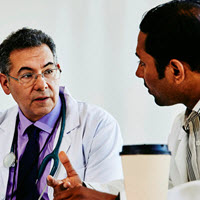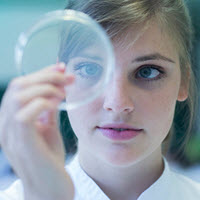North America
International Markets
Europe
North America
International Markets
Europe
Medical Device Engineering: the Teva Story

When we think of medicines, we generally think of liquid syrups or pills in the form of tablets or capsules. But these are not always suitable – or effective – for many conditions.
Take diabetes for example, where the body does not produce enough insulin to regulate blood sugars. Insulin can’t be taken orally as the digestive system would break it down before it reached the bloodstream, so it must be injected.
Or consider asthma, a chronic lung disease that makes it difficult to breathe. Inhalers deliver medication directly to the lungs where it’s needed, rather than a tablet which would circulate through the body and be less effective.
Transdermal – through the skin – patches provide an easily applied, reliable, comfortable and controlled release of medication, while implants are an effective way of providing consistent daily levels of medication for regulation of body functions.
From insulin pens to asthma inhalers, medical devices have revolutionized treatment delivery. At Teva, the story of device engineering is about innovation, patient needs and global impact.
Combination products explained
When drugs or biologics are used directly with or packaged together with a device, these are collectively known as combination products (CPs). They offer a unique challenge to their producers, as not only must the medicine do its job efficiently, so must the device. Both must work together to give the patient the best and most effective experience.
Teva produces a wide range of drug devices, with a yearly output of over 100 million combination products globally. This requires solution-based innovations from teams working around the world in its generics’ powerhouse, biosimilars franchise and innovative medicines businesses. Teva’s extensive experience and expertise in these sectors is a key part of its success in the field.
“Some companies specialize in injectables, some in inhalers, for example, but Teva works right across the board and that means we have a wealth of expertise and talent to draw on,” explains Rob Cook, Head of Generics and SVP Small Molecule CMC & Combination Products at Teva.
“Engineers who come from different product teams often bring new perspectives, which can lead to faster problem solving. Whereas a lot of the larger companies rely on third parties for their device design development and manufacture which can lead to a lack of control and innovation.”
Putting patients first in human factors research
Investigating how patients and healthcare professionals use these devices is key, but this has traditionally come late in the process of designing them. Teva is now innovating to change this, as being aware of user needs from the outset is key to providing optimum designs.
Paul Bridges, VP Head of Global Combination Products and Device R&D, gives an example from an industry project to devise an inhaled insulin product, providing diabetic patients with an alternative to an injector – “because obviously no one really likes using needles”. Despite the new approach, patient feedback revealed a key issue; the device was awkward to use in public.
“When patients are in restaurants, for example, they didn’t want to get this large device out and hold it up to their mouth in a public environment. They preferred being able to self-administer their drug very discreetly under the table, using traditional injection pens.”
The investment to get final manufactured product to patients was substantial and, as Paul says, “the value of the product just evaporated as soon as patients tried it out”. Sourcing patient feedback at the start of the project would have saved a lot of time and money.
But it’s not just about asking patients what they want, it’s also about pre-empting their needs.
“As Henry Ford says, if he’d asked people what they wanted, they would have said faster horses. Had he followed that suggestion, he never would have invented the car,” says Paul.
By fusing human factors research with science and engineering capabilities, Teva aims to leverage innovative device technology and provide bigger solutions to optimize the user experience.
Predictive engineering
Early evaluation, as we have seen, is key.
“We’re doing more early device development and technology feasibility evaluation work, so there's less risk of device failure,” says Mark DeStefano, Director of Global Technology Innovation for Teva’s CPD R&D group. “This means we don't need to implement new device variants late in the game or miss a launch window because of device deficiency. Instead, we discover issues sooner rather than later.”
Being able to predict the future is also key, says Paul Bridges. “Using engineering analysis, we can anticipate the way a product will perform before we've even manufactured it. We can model the way different components will work together and use physical and mathematical models to anticipate how the design will work. In this way, we can cut out a lot of development time and progress to product submission and commercialization sooner.”
Teva’s reach and pioneering approach
Teva’s commercial experience in multiple markets supporting millions of patients is also fueling its success in CPs.
“There's a lot of knowledge that comes from the fact we're tackling all these different disease types across generics, biosimilars and innovative medicines, not to mention our business development partnering opportunities. This potential is huge,” says Paul.
It’s not just the scale of Teva’s operation that’s important however, Paul explains, it’s also its approach.
“I’ve worked in all sorts of different companies, from big corporations to start-ups, and Teva has the perfect blend of those two worlds - the entrepreneurial spirit of a startup, alongside the advantage and potential of a large size corporation.”
Overcoming challenges through innovation
Innovating at the corporate scale brings its own challenges of course. And innovation is also required to solve them.
“There's a lot of innovation and development rigor required to demonstrate that generic devices can be interchangeable,” says Rob Cook.
This is even more challenging in the US, where the FDA is only now providing guidance in this area. The situation is more straightforward in Europe, where regulators will accept state-of-the-art innovations that improve the product over its generic counterpart.
“Those are the challenges we are facing with global development. One size doesn’t fit all markets unfortunately.”
What does the future look like?
“There is a lot of technical data available to us across Teva’s extensive pipeline and commercial product offering and we’re moving into a space where we can simulate and predict to enhance our R&D efforts using that data,” says Rob Cook. “There are interesting times ahead.”
“Teva has a very broad and deep capability in medical devices,” says Paul Bridges. “And we’re building on that to build the future. For me, it’s personal stories that make an impact. One of my close family members is a potential patient for one of the products we’re developing so I have direct experience of the challenges they face and how our team’s innovations may help them. I have a very personal connection to Teva’s journey in CPs and what we’re doing every day.”
Teva’s CP journey is truly global, with over 90 experts located in six sites around the world offering engineering, scientific and human factors expertise. They are collaborating to support Teva’s Pivot to Growth strategy and, most importantly, striving to enhance the patient experience.
NPS-ALL-NP-01466-JANUARY-2025
Find out more:
- Key trends in drug delivery devices: Mark DeStefano, Director of Global Technology Innovation, Combination Products and Device R&D discusses the latest innovations
- What are biologics and biosimilars? We explain the difference and showcase Teva’s innovative work in this space
- Read more about complex generics: facts, figures and who they benefit
- Interested in getting involved in the work that we do? Explore a career at Teva





































































